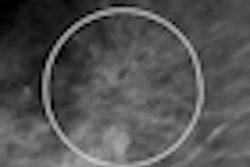Monday, November 26 | 10:50 a.m.-11:00 a.m. | SSC08-03 | Room S402AB
Researchers in Germany have found -- with a caveat -- that a computer-aided diagnosis (CADx) system turned in a better performance than radiologists for characterizing indeterminate liver lesions.Important liver lesions are often missed on commonly used modalities such as CT and MR, with reported sensitivity rates ranging between 50% and 87%. In addition to challenges with detection, characterization and risk assessment also are difficult, particularly for small lesions, said presenter Dr. Peter Dankerl from University Hospital Erlangen.
The researchers sought to compare the predictive performance of a CADx system (developed under the German Theseus-Medico project) with radiologist characterization performance in cases in which both the system and the radiologist only had access to the same amount of image information (axial CT slices displaying only the liver).
Based on computerized image analysis alone, the CADx system outperformed radiologists in discriminating liver lesions. The performance of radiologists can be drastically inferior to the system when rating liver lesions with image information limited to the liver, and without additional patient-specific information such as previous scans, additional imaging exams, and laboratory values, Dankerl said.
"According to our findings, we may suggest that the computer-based decision-support system of the future should not be based exclusively on image-processing algorithms," Dankerl said. "Rather, it is of paramount importance for it to have access to and make benefit of related medical knowledge and all relevant patient-specific information from the patient record, in addition to being able to make use of all images of the examination, instead of focusing on a single body region of a single scan."



















